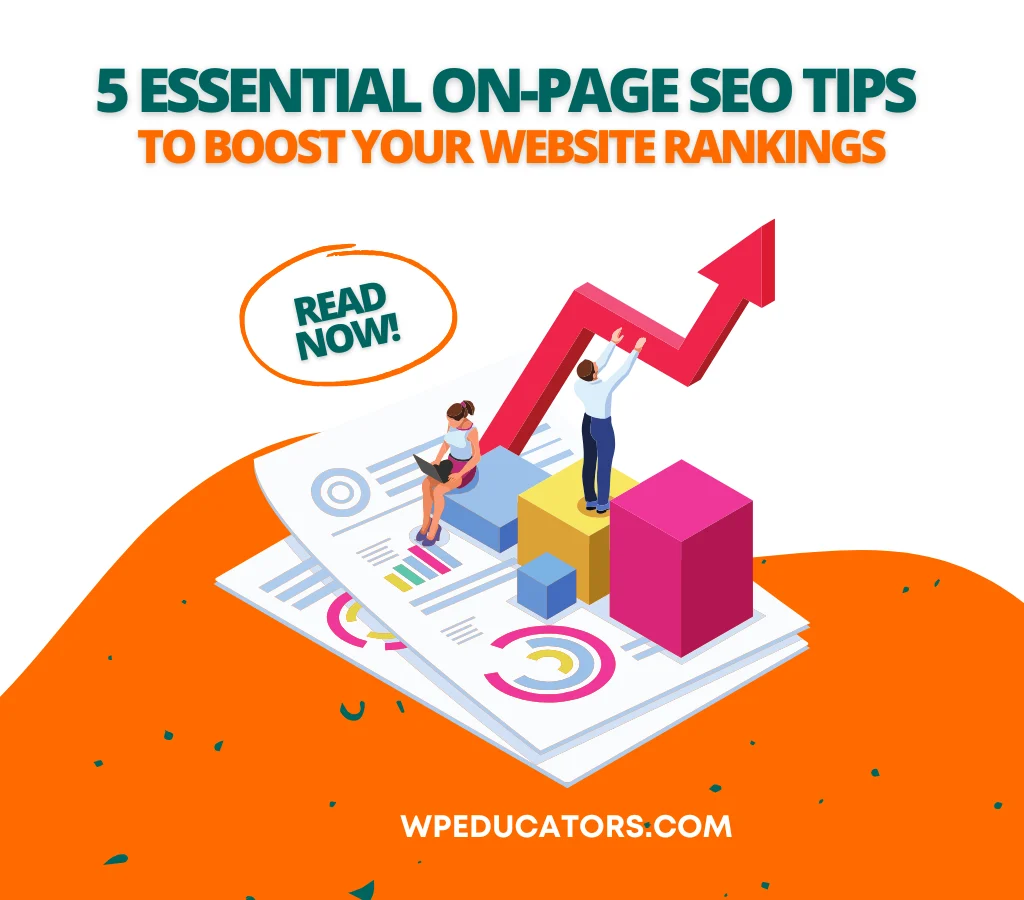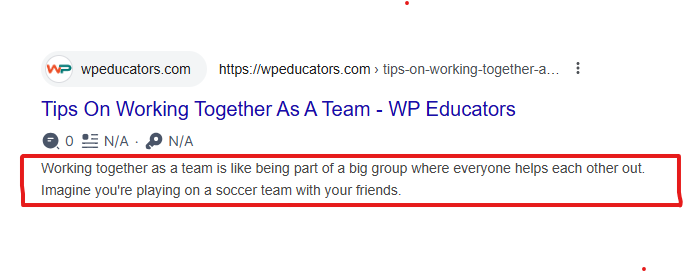5 Essential On-Page SEO Tips to Boost Your Website Rankings

In the fast-evolving digital landscape of 2025, having a website isn’t enough—you need to ensure it ranks well on search engines. On-page SEO is one of the most powerful tools to help you climb the search engine results pages (SERPs) and connect with your audience. Whether you’re a small business owner or a content creator, mastering on-page SEO tips can make all the difference in increasing your website’s visibility and performance.
This guide will break down five essential on-page SEO strategies to help you improve SEO, increase website rankings, and make your content stand out in search results.
1. Create Engaging, Keyword-Rich Content
When it comes to on-page SEO, content is still king. High-quality, relevant, and engaging content keeps visitors on your site longer, signaling to search engines that your website offers value.
Here’s how to get it right:
- Do Keyword Research: Use tools like Google Keyword Planner, Ahrefs, or SEMrush to identify primary keywords like in this article my primary keyword is “on-page SEO tips” and supporting keywords such as “on page SEO optimization, Website Rankings and on-page seo factors.”
- Natural Placement: Integrate keywords seamlessly into your content. Avoid keyword stuffing, which can hurt your rankings. Keyword stuffing is when someone adds too many keywords to a webpage to try to rank higher on search engines. It makes the content unnatural and hard to read, and search engines may penalize the website for it.
- Focus on Intent: Understand your audience’s search intent and provide answers to their questions. For example, if they’re looking for an “SEO checklist 2025,” include actionable steps they can follow.
Pro Tip: Break up long sections of text with headings, bullet points, and visuals to make your content attractive and engaging.
2. Optimize Title Tags and Meta Descriptions
Your title tag and meta description are the first things people see in search results. These elements are critical on-page SEO factors that influence click-through rates (CTR) and rankings.
How to Optimize:
- Create Compelling Titles: Include your primary keyword early in the title tag and make it enticing. For example: “5 Essential On-Page SEO Tips to Boost Your Website Rankings in 2025.” In this title my primary keyword is On-Page SEO Tips and the words like “Essential tips and Boost your website rankings” make it compelling.
- Write Persuasive Meta Descriptions: Summarize your content in 150-160 characters, incorporating keywords and a call-to-action (CTA). For example: “Learn 5 must-know on-page SEO tips to increase your website rankings in 2025. Improve SEO with this actionable guide.” You can use Yoast SEO or the Rank Math plugin to do this.
- Keep it Unique: Avoid duplicating title tags or meta descriptions across pages—each should be unique to the content on that page.

Figure: Meta description
3. Structure Your Content for Readability
Search engines prioritize websites that offer a great user experience, and content readability plays a significant role in that. Structured, easy-to-read content keeps visitors engaged, reducing bounce rates and boosting rankings.
Actionable Tips:
- Use Headers Strategically: Organize content with H1, H2, and H3 tags. Include keywords in headers to signal relevance to search engines.
- Short Paragraphs: Keep sentences and paragraphs short for better readability, especially on mobile devices.
- Visual Elements: Add images, videos, and infographics to break up text and provide additional context. Ensure all visuals are optimized for fast loading.
Pro Tip: Use tools like Hemingway or Grammarly to ensure your writing is clear and concise.
4. Focus on URL Structure and Internal Linking
Your website’s URL structure and internal links significantly impact its on page SEO optimization. A clean, organized URL helps search engines and users understand what your page is about, while internal links guide visitors to related content, keeping them on your site longer.
Best Practices for URLs:
- Keep URLs Simple: Use short, descriptive URLs that include your primary keyword. For example: www.example.com/on-page-seo-tips.
- Avoid Special Characters: Stick to hyphens instead of underscores, and avoid using unnecessary parameters or numbers.
Internal Linking Tips: Link to relevant pages within your site using descriptive anchor text. For example, “Check out our complete SEO checklist 2025 for more tips.”
Ensure all links are functional and avoid broken links, which can harm your rankings. Broken links are website links that don’t work anymore. When clicked, they lead to an error page (like “404 Not Found”) because the linked page was moved, or deleted, or incorrect URL.
5. Optimize Images and Improve Page Speed
Images play a crucial role in enhancing user experience, but if not optimized, they can slow down your site and hurt your rankings. Page speed is a core web vital that search engines prioritize when ranking websites.
Image Optimization Checklist:
- Compress Images: Use tools like TinyPNG or ImageOptim to reduce file sizes without compromising quality.
- Add Alt Text: Include descriptive alt text for all images, incorporating relevant keywords where appropriate. This improves accessibility and helps search engines understand the content of your images.
- Use Correct Formats: Opt for modern formats like WebP for faster loading times. You can convert your PNG or JPG images into WebP using different tools by searching on Google like PNG to WebP convertor.
Page Speed Tips:
- Minimize the use of large files and excessive scripts.
- Enable browser caching and use a content delivery network (CDN) to improve loading times globally. There are plugins for this, just search on Google and you will get the names.
- Regularly test your site’s speed using tools like Google PageSpeed Insights or GTmetrix.
Bonus Tip: Keep Your Site Mobile-Friendly
With mobile devices accounting for the majority of web traffic, ensuring your site is mobile-friendly is no longer optional. Use responsive design to provide a seamless experience across all devices, and test your site using Google’s Mobile-Friendly Test. Mobile responsive means, the website and all its pages should look good on mobile, optimized according to screen resolution.
Final Thoughts: Elevate Your Rankings with On-Page SEO
Mastering on-page SEO tips is essential for anyone looking to increase website rankings in 2025. By focusing on high-quality content, optimizing technical elements, and prioritizing user experience, you can ensure your website stands out in a competitive digital landscape.
Investing in on-page SEO optimization isn’t just about pleasing search engines—it’s about delivering value to your audience and building a strong online presence. Start implementing these On-Page SEO tips today and watch your rankings soar.
On-Page SEO Services
Looking for professional SEO services to take your website to the next level? I specialize in crafting tailored SEO strategies, including on-page optimization, keyword research, and content creation, to help you improve your rankings and drive targeted traffic. Let’s work together to make your website a powerful tool for growth. Click on the button below to read about our services or the chat button at the bottom right corner to contact us directly.
FAQs
What are the most important on-page SEO factors?
Key factors include high-quality content, optimized title tags and meta descriptions, proper use of headers, fast page speed, and internal linking.
How can I improve SEO for my website?
Start by researching keywords, optimizing your content and images, improving page speed, and ensuring your site is mobile-friendly.
What is an SEO checklist for 2025?
An SEO checklist 2025 includes optimizing keywords, meta tags, images, URL structure, internal links, and ensuring mobile responsiveness.
What are the three main components of on-page SEO?
Content optimization, technical elements (like meta tags and page speed), and user experience (including mobile-friendliness and internal linking).
Why is on-page SEO important?
It ensures your website is easily discoverable by search engines and provides a great user experience, leading to higher rankings and better engagement.

Add a Comment